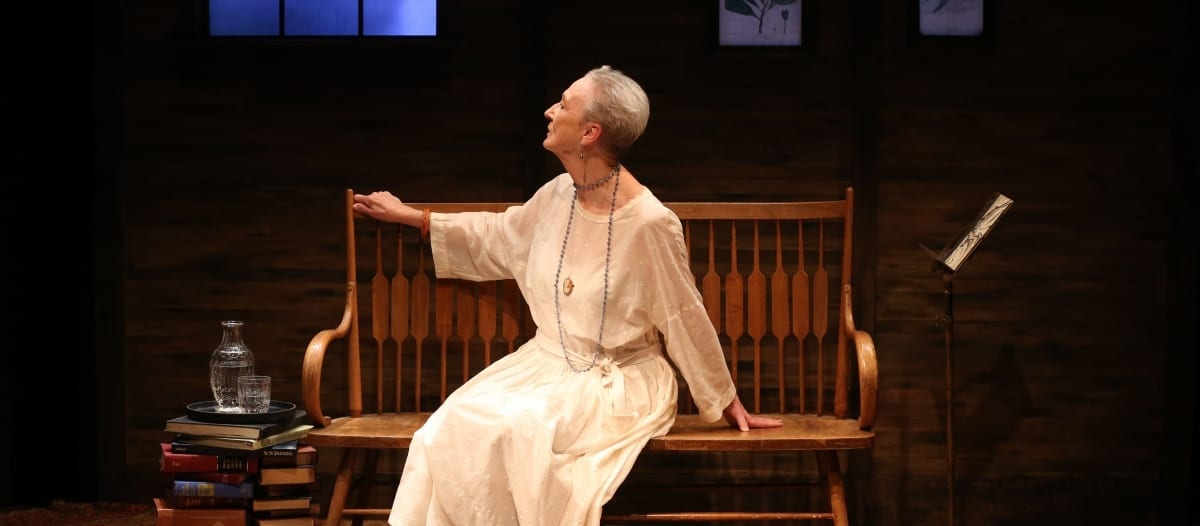Emily Dickinson is one of the most celebrated of American poets. It was not until after her death in 1886 that her poems, discovered by her sister Lavinia, became public and revealed the scope of her genius, which lies in the apparently simple yet complex questioning of human immortality and death, as well as exalting in nature’s wonders. Her first collection of poetry was published in 1890 by Thomas Wentworth Higginson and Mabel Loomis Todd.
Rebecca Gilman’s one-woman play, A Woman of the World, starring the exquisite Kathleen Chalfant and gracefully directed by Valentina Fratti now at 59E59 delves into the life of Mabel Loomis Todd. It is less about Emily Dickinson and more about Mabel’s life as a worldly woman, perhaps in contrast to Emily’s supposed solitary life. Ms. Chalfant, with superb and subtle theatricality, regales us with the self-glorifying personality of Mabel as she recounts her own life and her associations with the Dickinson family. We explore Mabel’s somewhat unorthodox lifestyle as (what we used to call) a free spirit who could drink in mixed company, expose her ankles in a dress, and declare the joy and intimate details of her two great loves – her husband and Emily Dickinson’s brother, Austin.
The play begins in 1931. Mabel’s husband is dead, Emily Dickinson is dead, her brother Austin is dead, but Mabel survives and thrives despite a stroke. She now presents “informal entertainments” at the Point Breeze Inn on Hog Island off the coast of Maine. That informal entertainment is a discourse on herself, and we, the actual audience, are the island guests. Cate McCrae’s simple set – a New England-style wooden bench, a brass music stand, pictures on the wall of leaves and one of a loon, and a frosted glass window – enhances the delicacy of this production.

After getting off to a bumpy start, Ms. Chalfant then unleashes the life and loves of Mabel. Mabel can barely contain herself in hyperbolic praise of her father, her husband, and her affair with Austin Dickinson. There is great emphasis on, yet delightful disdain for, Susan, Austin’s wife. Research, however, reveals that Susan was actually a life-long friend of Emily’s and perhaps so beloved to be the subject of some of Emily’s poems as revealed in her letters. And therein is a clue as to the essence of Gilman’s play. A Woman of the World is really only about how Mabel comes to terms with the world she wants to remember and the reality of her life as it was and is now as she nears its end.
Gilman has chosen to give Mabel a foil/antagonist of sort in the invisible presence of her daughter, Millicent. Mabel motions off stage to where Millicent hides, somewhere behind the bookcase. She continually refers to her and responds to her, but the audience never sees or hears her. The theatrical contrivance is obvious (and distracting) in its intent to be a challenge to Mabel and guide her to the truth about herself.
Ms. Chalfant’s is an eloquent portrayal of Mabel as she moves from self-aggrandizement to a sincere sense of humility in the face of nature’s magnificence. Finally, it is clear that it doesn’t matter if Mabel’s perceptions of Emily or Susan Dickinson or even herself are historically accurate. She comes to terms with her hubris of pride and discovers a humility that actually exalts her as a human being. She embraces Emily’s “I’m Nobody! Who are you?” never despairing but praising her own universal insignificance.

